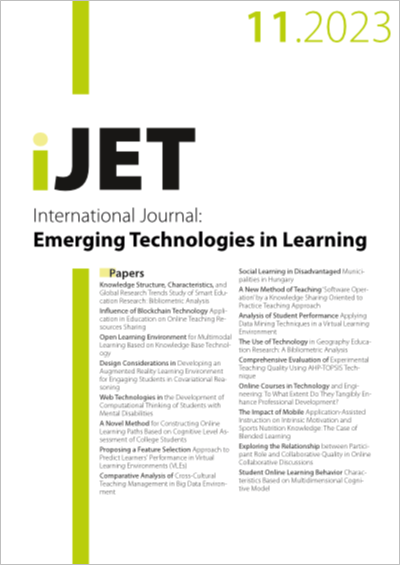Proposing a Feature Selection Approach to Predict Learners' Performance in Virtual Learning Environments (VLEs)
DOI:
https://doi.org/10.3991/ijet.v18i11.35405Keywords:
Educational data mining (EDM), feature selection, prediction techniques, student performance, Virtual Learning Environment (VLEs), Open University Learning Analytics Dataset (OULAD)Abstract
Predicting students' success in virtual learning environments (VLEs) can help educational institutions improve their online services and provide efficient online learning content. However, this cannot be achieved without identifying the possible effective features that have a high influence on students' performance. This research aims at providing an early prediction approach to learners' achievement on VLEs. A new feature selection method called a Developed Sequential Feature Selection (D-SFS) was proposed to identify the most effective features that could highly enhance prediction accuracy. The findings suggest that the D-SFS method outperforms the original Sequential Forward Selection (SFS) approach. The prediction accuracy using the SFS method was 92.466% with seventeen features, whereas the proposed approach successfully predicted 92.518% of students' performance using seven features only. Such outcomes highlight the importance of implementing a feature selection method to enhance prediction accuracy, decrease the number of features, and reduce the model's time and execution complexity.
Downloads
Published
How to Cite
Issue
Section
License
Copyright (c) 2023 Miami Abdul Aziz Al-Masoudy, Ahmed Al-Azawei

This work is licensed under a Creative Commons Attribution 4.0 International License.



